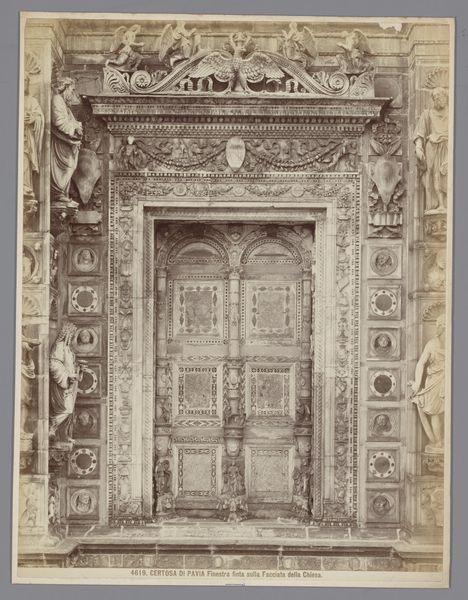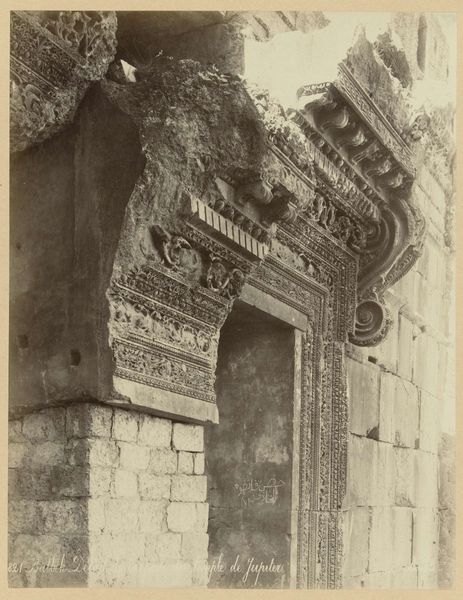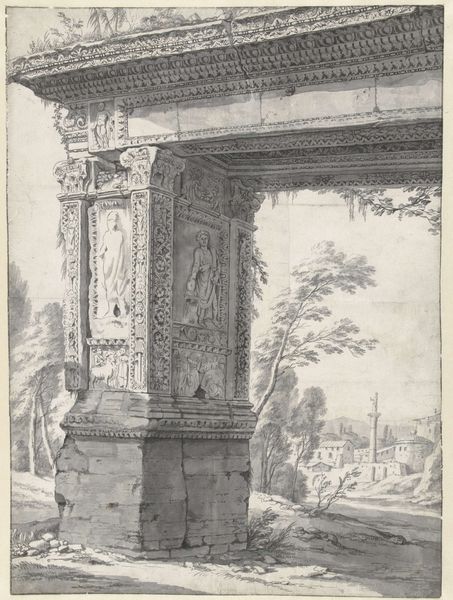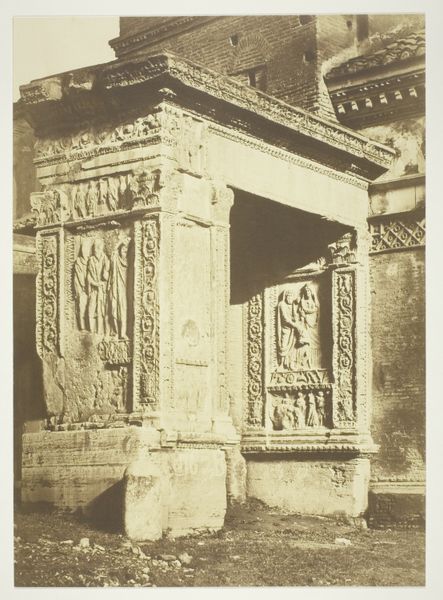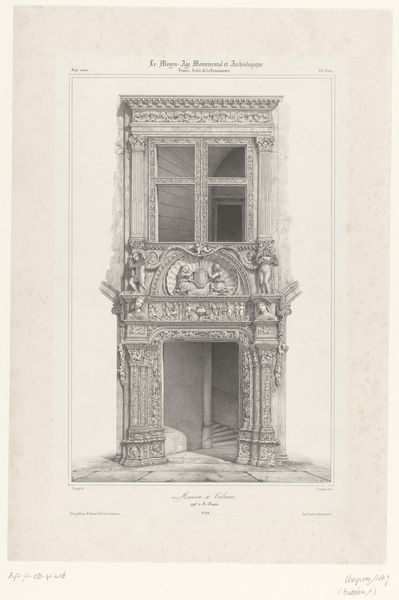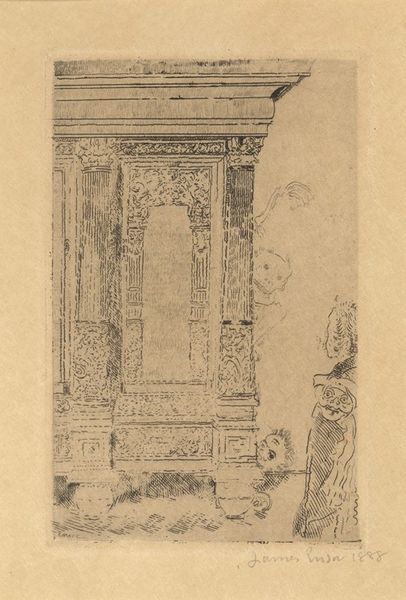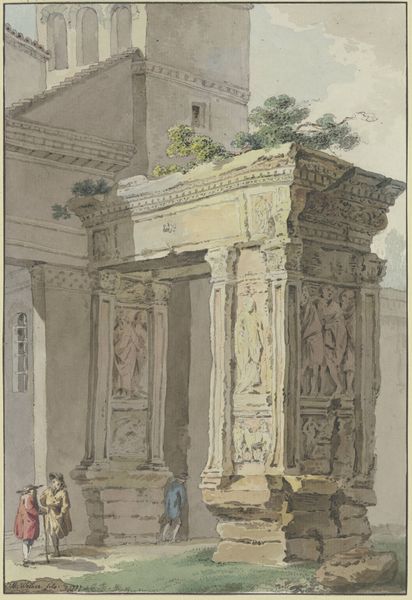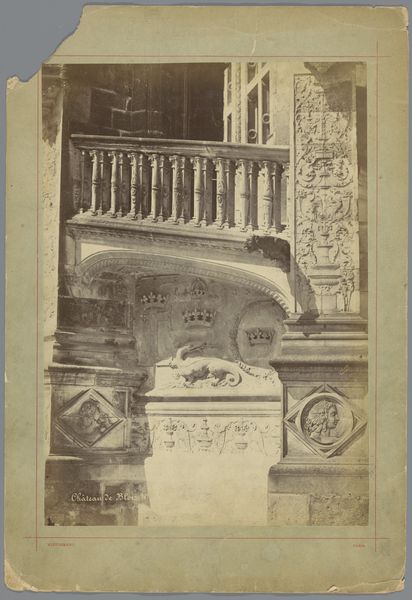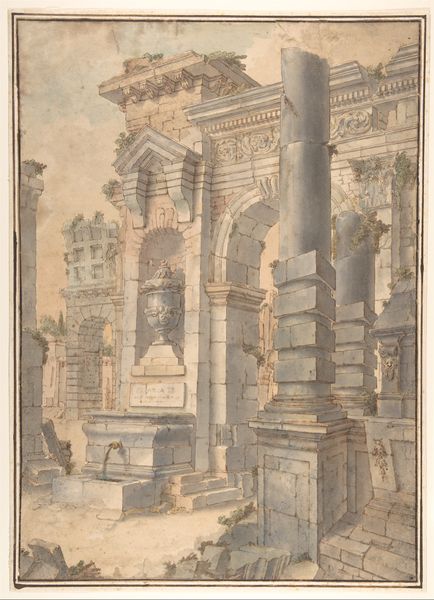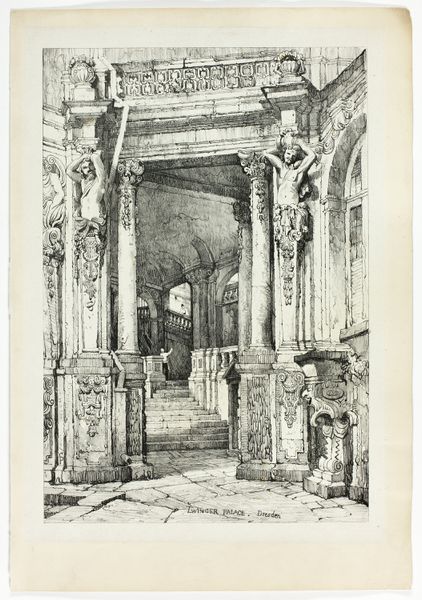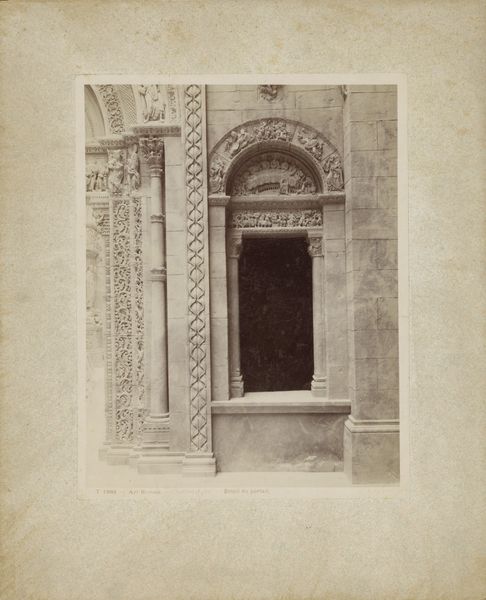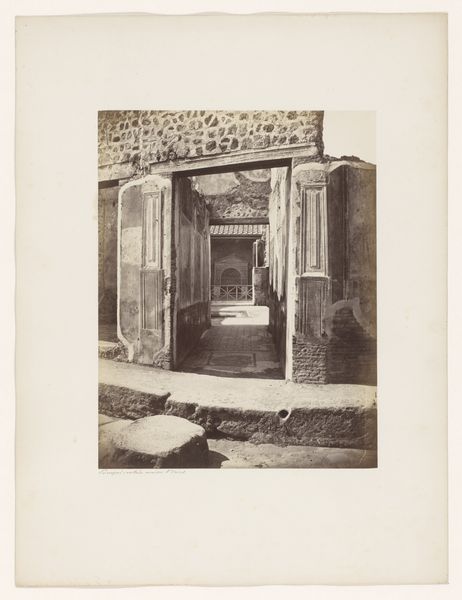
drawing, ink, engraving, architecture
#
drawing
#
pen sketch
#
pencil sketch
#
old engraving style
#
classical-realism
#
ink
#
geometric
#
ancient-mediterranean
#
line
#
history-painting
#
engraving
#
architecture
Dimensions: height 539 mm, width 405 mm
Copyright: Rijks Museum: Open Domain
Willem Romeyn created this drawing of a Roman Triumphal Arch sometime in the 17th century using pen and brush in gray ink. At the time, the Dutch Republic was asserting itself on the world stage through trade and military power, identifying with the grandeur of the Roman Empire. But what does it mean to look back at the triumphal arches of antiquity through the lens of the Dutch Golden Age, with its own colonial ambitions and societal hierarchies? The arch, a symbol of victory and imperial authority, stands here in decay, overgrown with vegetation, evoking a sense of time's passage and the transience of power. Consider the act of drawing itself: Romeyn, a white, European man, is interpreting and representing a structure built by another empire, one that also conquered and enslaved. Who is remembered in these grand structures, and who is erased? How do we grapple with the layers of history and the complex power dynamics inherent in such representations?
Comments
No comments
Be the first to comment and join the conversation on the ultimate creative platform.
